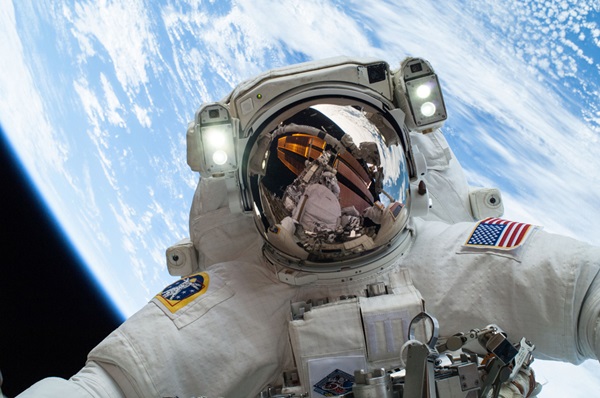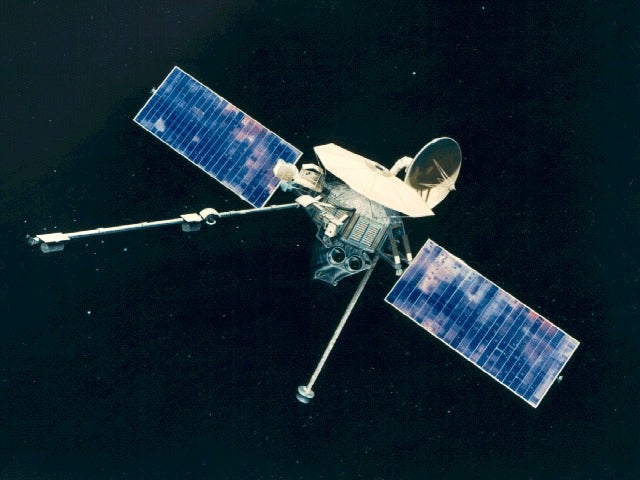As their orbital home soars 260 miles (420 kilometers) above Earth, astronauts Rick Mastracchio of NASA and Koichi Wakata, the first Japan Aerospace Exploration Agency station commander, will give the National Geographic Channel viewers a guided tour of the space station, which has more livable room than a conventional six-bedroom house. The two astronauts, who arrived at the space station back on November 7 along with Russian cosmonaut Mikhail Tyurin, are scheduled to remain aboard the station as the crew of Expedition 39 until mid-May. Three more crew members, including NASA astronaut Steve Swanson, are slated to launch to the station March 25 to round out the crew.
Wakata became the first Japanese commander of the station when his Expedition 38 crewmates – Commander Oleg Kotov and Flight Engineers Mike Hopkins and Sergey Ryazanskiy – departed Monday.
During their time aboard the station so far, Wakata and Mastracchio have welcomed three visiting cargo spacecraft, including the first commercial delivery mission of Orbital Sciences Corp.’s Cygnus spacecraft in January. And Wakata and Mastracchio already are gearing up for the robotic capture of the SpaceX Dragon cargo ship, at the end of the month.
The seven-windowed cupola from which Wakata and Mastracchio will be operating the station’s robotic arm for the capture of Dragon also serves as a prime viewing spot for the astronauts to photograph Earth below. The astronauts’ dramatic and colorful photos from space are not just reminders of Earth’s fragile beauty, but also provide near real-time information exchange between the crew and scientists tracking dynamic geological and meteorological events here on Earth. Critical environmental-monitoring sites are photographed repeatedly over time. And Earth-limb pictures taken at sunrise and sunset document changes in atmospheric layering and record such phenomena as aurorae and noctilucent — night clouds in the upper atmosphere — clouds.
The astronauts will share a bit of their unique perspective of Earth with viewers Friday, but the public can visit the Gateway to Astronaut Photography to catch up on the more than 1 million Earth photographs taken by astronauts so far. Mastracchio and Wakata also continue to share their favorite Earth photos on Twitter.
During Friday’s broadcast, the astronauts will show off some of the nearly 300 experiments that have taken place aboard the station over the past year. Fully assembled and continuously inhabited, the orbiting laboratory provides a unique environment for multidisciplinary research and technology development that drives space exploration, basic discovery, and benefits to people on Earth.
For example, a trio of free-flying robots known as Synchronized Position Hold, Engage, Reorient, Experimental Satellites (SPHERES) have been used for variety of experiments, studying topics such as satellite servicing, wireless power transfer, virtual navigation, and fluid slosh in rocket tanks. The bowling ball-sized SPHERES robots have even played a role in education as teams of students from around the world go head-to-head to program the best algorithms to command the robots for the Zero Robotics competition.
The crew also will discuss the importance of keeping healthy during these long-duration missions through a balanced diet of prepackaged space food and a daily two-hour exercise regimen to prevent the loss of muscle mass and bone density. Human health management for long-duration space travel is a key focus area for research as NASA and Roscosmos prepare for two crew members, Scott Kelly and Mikhail Kornienko, to spend a full year aboard the space station beginning in 2015.
While the crew works aboard the station, teams of flight controllers around the world work together to monitor systems and experiments aboard the station and keep the crew safe. National Geographic and United Kingdom’s Channel 4 will go into the heart of Houston’s Mission Control Center with NASA astronaut Mike Massimino to show how the specialists there work tirelessly to anticipate and deal with every potential incident or emergency. On Sunday, Massimino will give Channel 4 viewers another live look into Mission Control as he details the real-time decisions he and the ground teams faced during his series of spacewalks on two space shuttle missions to service and upgrade the Hubble Space Telescope.
If the two-hour glimpse into life and work aboard the station whets your appetite for more, tune in to NASA Television each weekday at 11 a.m. EDT for “Space Station Live” for the latest on the activities of the Expedition crew. Also check out “Space to Ground,” a weekly wrap-up of all the station activities, available on NASA’s website and on iTunes.
And while the crew is hard at work up in space, you can keep an eye on them from here on Earth. As the third-brightest object in the sky, the space station is easy to see if you know when to look up. NASA’s “Spot The Station” service gives you a list of upcoming sighting opportunities for thousands of locations worldwide and will let you sign up to receive notices of opportunities in your email inbox or cell phone. Or you can use NASA SkyWatch to look up coming opportunities by your home zip code or download the NASA app for your mobile device and sighting opportunities around the globe.










